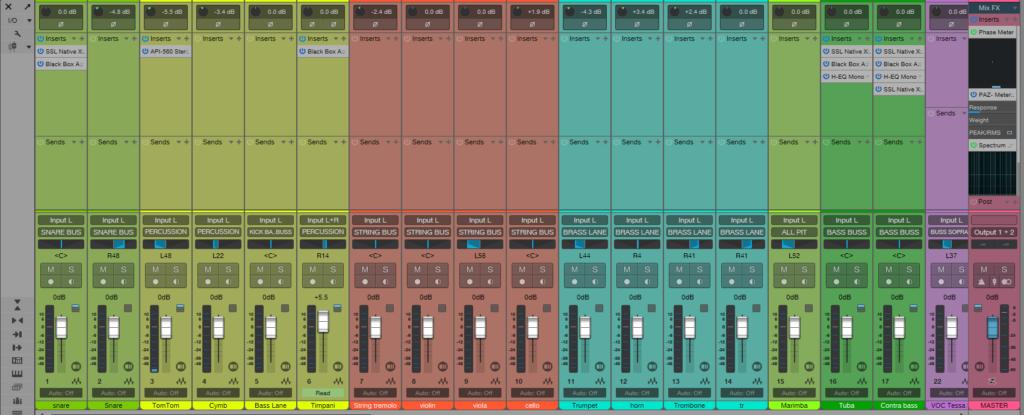As a professional composer, mastering the art of audio mixing is essential for creating polished and impactful music productions. Audio mixing involves blending individual tracks together to achieve balance, clarity, and cohesion in a final mix. However, for many aspiring composers and producers, the process of audio mixing can seem like a daunting task, filled with technical complexities and creative challenges. In this article, we will unravel the mysteries of audio mixing and explore essential tips for balancing and enhancing your tracks to achieve professional-quality results.

Understanding the Fundamentals of Audio Mixing
Before diving into specific mixing techniques, it’s crucial to understand the fundamental principles that govern the mixing process:
1. Frequency Spectrum:
The frequency spectrum ranges from low frequencies (bass) to high frequencies (treble). Understanding how different instruments and sounds occupy different frequency ranges is essential for achieving a balanced mix.
2. Panning and Stereo Imaging:
Panning allows you to position sounds across the stereo field, creating a sense of space and dimension in your mix. Stereo imaging techniques, such as width adjustment and stereo enhancement, can enhance the perceived size and depth of your mix.
3. Dynamic Range:
Managing dynamic range involves controlling the volume levels of individual tracks to ensure that they sit well together in the mix. Techniques such as compression, limiting, and automation are used to control dynamic fluctuations and maintain a consistent volume balance.
4. EQ and Frequency Balancing:
Equalization (EQ) is used to adjust the frequency balance of individual tracks, shaping their tonal characteristics and carving out space for each element in the mix. Proper EQing helps prevent frequency masking and ensures clarity and separation between instruments.
Essential Tips for Effective Audio Mixing
Now that we’ve covered the fundamentals, let’s explore some essential tips for enhancing your audio mixing skills:
1. Start with a Clean Slate:
Begin your mixing process with well-recorded, high-quality tracks. Ensure that each track is properly edited and free from any unwanted noise, clicks, or pops before diving into the mixing stage.
2. Establish a Solid Foundation:
Pay attention to the foundational elements of your mix, such as drums and bass. These elements provide the rhythmic and harmonic backbone of your track, so it’s essential to ensure they are well-balanced and cohesive.
3. Use Reference Tracks:
Referencing commercially released tracks in a similar genre to yours can provide valuable insights into mixing techniques and sonic characteristics to strive for in your own mix. Compare your mix to reference tracks to identify areas for improvement.
4. Focus on Clarity and Separation:
Aim for clarity and separation between instruments by using EQ to carve out space for each element in the frequency spectrum. Pay attention to the arrangement and frequency content of each track to avoid frequency masking and muddiness in the mix.
5. Utilize Dynamic Processing:
Experiment with dynamic processing techniques such as compression, expansion, and transient shaping to control the dynamic range of individual tracks and shape their sonic characteristics. Use compression to add punch and glue to your mix, but be careful not to over-compress and squash the dynamics.
6. Create Depth and Dimension:
Use reverb, delay, and spatial processing to create depth and dimension in your mix. Experiment with different reverbs and delays to place sounds in virtual spaces and add a sense of realism and depth to your mix.
7. Mix at Low Volumes:
Mixing at low volumes can provide a more accurate representation of your mix and help prevent ear fatigue during long mixing sessions. Regularly check your mix at different volume levels to ensure it translates well across different playback systems.

8. Trust Your Ears:
While technical knowledge is essential, ultimately, your ears are the most valuable tool in the mixing process. Trust your instincts and listen critically to your mix, making adjustments based on what sounds best rather than relying solely on visual meters and indicators.
Conclusion
Audio mixing is both an art and a science, requiring technical skill, creativity, and a discerning ear. By understanding the fundamental principles of mixing and implementing essential tips and techniques, you can unlock the mysteries of audio mixing and elevate your music productions to new heights. Remember to approach mixing with patience, experimentation, and an open mind, and don’t be afraid to trust your instincts and follow your creative intuition. With practice and perseverance, you can master the art of audio mixing and create professional-quality mixes that captivate and engage listeners.